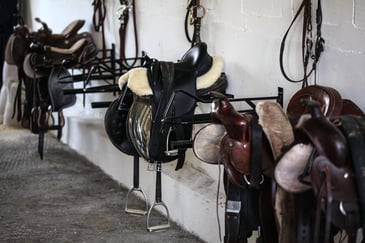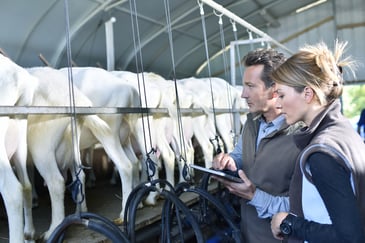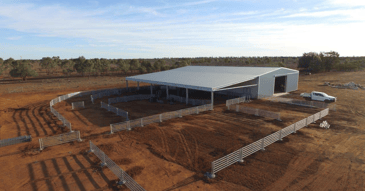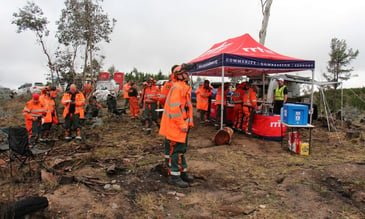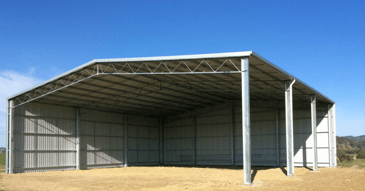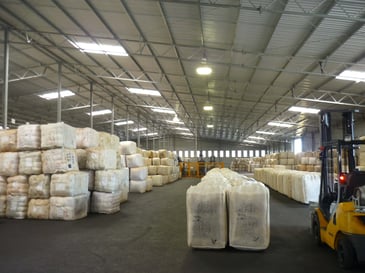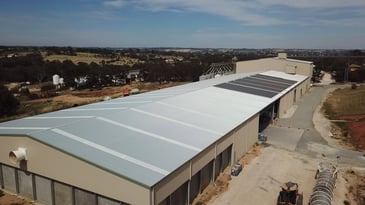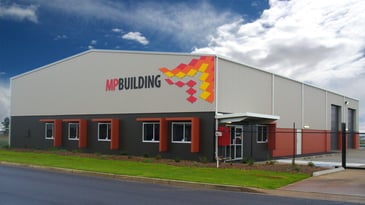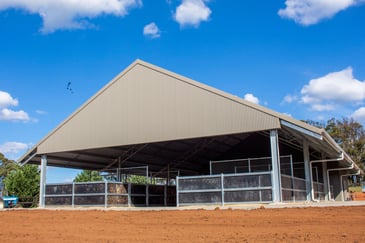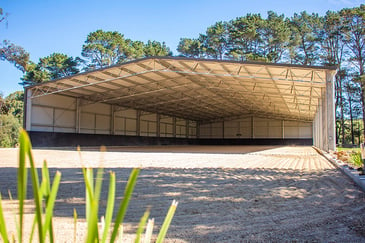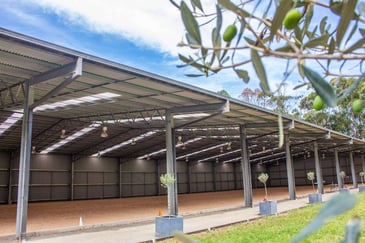Steel sheds are workhorses on rural properties across Australia, sheltering everything from tractors and grain to livestock and workshop equipment. But anyone who's stepped into an uninsulated steel shed on a scorching January afternoon knows the problem: these metal boxes turn into ovens in summer and iceboxes in winter. Insulation makes a real difference. Properly insulated rural sheds protect machinery from temperature extremes, prevent condensation damage, keep stored produce viable, and create bearable conditions for livestock or workshop activities. Here's what you need to know about your options. Foil blanket insulation: the go-to solution Foil insulation blankets - Aircell - are the most popular choice for steel sheds Australia-wide. These reflective barriers work by bouncing radiant heat away rather than just slowing heat transfer, typically offering R-values between R1.5 and R2.5. Aircell handles Australian conditions well, reducing radiant heat gain in summer and minimising heat loss in winter. They also help control condensation when properly installed. For general machinery storage, hay sheds, or multi-purpose applications, Aircell delivers solid performance without excessive cost. If you're planning a new steel shed, we've got you covered. Download our farm sheds brochure to explore configurations and specifications for modern rural buildings. Batt insulation: higher performance, more complexity Fibreglass or polyester batts bring residential-grade insulation to steel frame sheds. These thick panels fit between frame members and offer R-values from R2.5 to R6.0, depending on thickness, making them particularly effective at reducing conductive heat transfer. Installing batts requires more work than Aircell. The insulation needs support, which usually means adding internal lining sheets (corrugated iron, plywood, or similar) to hold everything in place. This creates a more finished interior but adds complexity to your project. Moisture management becomes important with batts. Unlike foil that's inherently moisture-resistant, batts can absorb water and lose effectiveness if condensation becomes an issue. You'll need proper vapour barriers and ventilation to prevent problems. Batts make sense for workshop spaces or storage areas where you want higher thermal performance and can handle the extra installation effort. Insulated panels: premium new-build option Pre-insulated panels combine the shed's skin and insulation layer into single sandwich panels. The outer and inner metal sheets have rigid foam insulation bonded between them, creating a structural panel that does double duty with R-values typically between R2.5 and R4.0. These panels work best for new construction rather than retrofits. They require specific engineering and frame design to support them properly, making them impractical for upgrading existing rural sheds. Insulated panels suit applications like workshops, coolrooms, or storage facilities where you need consistent internal conditions and want a professional finish from day one. Spray foam: the ultimate solution Professionally applied polyurethane spray foam represents the premium choice for insulating steel sheds. The foam gets sprayed directly onto the internal metal surfaces, where it expands to fill every gap and crack, then hardens into a rigid insulating layer, achieving R-values from R3.5 to R7.0 depending on application thickness. Spray foam adheres permanently to steel, creates an airtight seal that eliminates thermal bridging, and provides a complete vapour barrier in one application. This delivers the most stable internal environment possible, making it ideal for climate-sensitive agricultural applications like seed storage, specialised livestock operations, or temperature-controlled processing facilities. The trade-off is that spray foam requires professional application by certified installers using specialised equipment. You can't DIY this option. For high-value operations where maintaining specific climate conditions directly affects your bottom line, spray foam delivers unmatched performance. Choosing the right insulation Your insulation choice should align with what you're actually doing in the shed. Here's a quick guide: General machinery and equipment storage: Aircell provides excellent value and adequate temperature control Workshop spaces where you'll spend hours working: Batts or spray foam for better thermal comfort Climate-sensitive operations (seed storage, pharmaceutical-grade livestock facilities): Spray foam justifies its premium cost Think about your local climate too. Far North Queensland steel sheds face different challenges than Tasmanian ones. Intense heat and humidity might push you toward solutions with better moisture management, while extreme cold regions benefit from higher R-values. Installation and ventilation matter Proper installation matters as much as the material itself. Gaps, compression, or incorrect fitting significantly reduce effectiveness. Aircell needs good overlap and secure fastening. Batts must maintain their thickness and stay dry. Spray foam requires even coverage and professional expertise. Ventilation works alongside insulation. Even well-insulated steel frame sheds need airflow to manage moisture and prevent condensation buildup. Ridge vents, louvres, or whirlybirds help maintain air circulation while your insulation handles temperature control. Consider whether you'll install insulation yourself or hire professionals. Aircell is a realistic DIY project if you're comfortable working on ladders and scaffolding. Batts require more carpentry skills for the supporting structure. Spray foam must be professionally applied. Getting started with shed insulation Insulating your steel shed turns it from a basic shelter into a proper working environment that protects your assets year-round. Most rural shed owners find Aircell insulation hits the sweet spot for general use, while specialised agricultural or workshop applications might justify higher-performance options. Ready to configure your ideal rural shed with the right insulation from the start? Use our shed builder tool to explore sizes, layouts, and features that match your property's needs.
Steel sheds are workhorses on rural properties across Australia, sheltering everything from tractors and grain to livestock and workshop equipment. But anyone who's stepped into an uninsulated steel shed on a scorching January afternoon knows the problem: these metal boxes turn into ovens in summer and iceboxes in winter. Insulation makes a real difference. Properly insulated rural sheds protect machinery from temperature extremes, prevent condensation damage, keep stored produce viable, and create bearable conditions for livestock or workshop activities. Here's what you need to know about your options. Foil blanket insulation: the go-to solution Foil insulation blankets - Aircell - are the most popular choice for steel sheds Australia-wide. These reflective barriers work by bouncing radiant heat away rather than just slowing heat transfer, typically offering R-values between R1.5 and R2.5. Aircell handles Australian conditions well, reducing radiant heat gain in summer and minimising heat loss in winter. They also help control condensation when properly installed. For general machinery storage, hay sheds, or multi-purpose applications, Aircell delivers solid performance without excessive cost. If you're planning a new steel shed, we've got you covered. Download our farm sheds brochure to explore configurations and specifications for modern rural buildings. Batt insulation: higher performance, more complexity Fibreglass or polyester batts bring residential-grade insulation to steel frame sheds. These thick panels fit between frame members and offer R-values from R2.5 to R6.0, depending on thickness, making them particularly effective at reducing conductive heat transfer. Installing batts requires more work than Aircell. The insulation needs support, which usually means adding internal lining sheets (corrugated iron, plywood, or similar) to hold everything in place. This creates a more finished interior but adds complexity to your project. Moisture management becomes important with batts. Unlike foil that's inherently moisture-resistant, batts can absorb water and lose effectiveness if condensation becomes an issue. You'll need proper vapour barriers and ventilation to prevent problems. Batts make sense for workshop spaces or storage areas where you want higher thermal performance and can handle the extra installation effort. Insulated panels: premium new-build option Pre-insulated panels combine the shed's skin and insulation layer into single sandwich panels. The outer and inner metal sheets have rigid foam insulation bonded between them, creating a structural panel that does double duty with R-values typically between R2.5 and R4.0. These panels work best for new construction rather than retrofits. They require specific engineering and frame design to support them properly, making them impractical for upgrading existing rural sheds. Insulated panels suit applications like workshops, coolrooms, or storage facilities where you need consistent internal conditions and want a professional finish from day one. Spray foam: the ultimate solution Professionally applied polyurethane spray foam represents the premium choice for insulating steel sheds. The foam gets sprayed directly onto the internal metal surfaces, where it expands to fill every gap and crack, then hardens into a rigid insulating layer, achieving R-values from R3.5 to R7.0 depending on application thickness. Spray foam adheres permanently to steel, creates an airtight seal that eliminates thermal bridging, and provides a complete vapour barrier in one application. This delivers the most stable internal environment possible, making it ideal for climate-sensitive agricultural applications like seed storage, specialised livestock operations, or temperature-controlled processing facilities. The trade-off is that spray foam requires professional application by certified installers using specialised equipment. You can't DIY this option. For high-value operations where maintaining specific climate conditions directly affects your bottom line, spray foam delivers unmatched performance. Choosing the right insulation Your insulation choice should align with what you're actually doing in the shed. Here's a quick guide: General machinery and equipment storage: Aircell provides excellent value and adequate temperature control Workshop spaces where you'll spend hours working: Batts or spray foam for better thermal comfort Climate-sensitive operations (seed storage, pharmaceutical-grade livestock facilities): Spray foam justifies its premium cost Think about your local climate too. Far North Queensland steel sheds face different challenges than Tasmanian ones. Intense heat and humidity might push you toward solutions with better moisture management, while extreme cold regions benefit from higher R-values. Installation and ventilation matter Proper installation matters as much as the material itself. Gaps, compression, or incorrect fitting significantly reduce effectiveness. Aircell needs good overlap and secure fastening. Batts must maintain their thickness and stay dry. Spray foam requires even coverage and professional expertise. Ventilation works alongside insulation. Even well-insulated steel frame sheds need airflow to manage moisture and prevent condensation buildup. Ridge vents, louvres, or whirlybirds help maintain air circulation while your insulation handles temperature control. Consider whether you'll install insulation yourself or hire professionals. Aircell is a realistic DIY project if you're comfortable working on ladders and scaffolding. Batts require more carpentry skills for the supporting structure. Spray foam must be professionally applied. Getting started with shed insulation Insulating your steel shed turns it from a basic shelter into a proper working environment that protects your assets year-round. Most rural shed owners find Aircell insulation hits the sweet spot for general use, while specialised agricultural or workshop applications might justify higher-performance options. Ready to configure your ideal rural shed with the right insulation from the start? Use our shed builder tool to explore sizes, layouts, and features that match your property's needs. Steel sheds are workhorses on rural properties across Australia, sheltering everything from tractors and grain to livestock and workshop equipment. But anyone who's stepped into an uninsulated steel shed on a scorching January afternoon knows the problem: these metal boxes turn into ovens in summer and iceboxes in winter. Insulation makes a real difference. Properly insulated rural sheds protect machinery from temperature extremes, prevent condensation damage, keep stored produce viable, and create bearable conditions for livestock or workshop activities. Here's what you need to know about your options. Foil blanket insulation: the go-to solution Foil insulation blankets - Aircell - are the most popular choice for steel sheds Australia-wide. These reflective barriers work by bouncing radiant heat away rather than just slowing heat transfer, typically offering R-values between R1.5 and R2.5. Aircell handles Australian conditions well, reducing radiant heat gain in summer and minimising heat loss in winter. They also help control condensation when properly installed. For general machinery storage, hay sheds, or multi-purpose applications, Aircell delivers solid performance without excessive cost. If you're planning a new steel shed, we've got you covered. Download our farm sheds brochure to explore configurations and specifications for modern rural buildings. Batt insulation: higher performance, more complexity Fibreglass or polyester batts bring residential-grade insulation to steel frame sheds. These thick panels fit between frame members and offer R-values from R2.5 to R6.0, depending on thickness, making them particularly effective at reducing conductive heat transfer. Installing batts requires more work than Aircell. The insulation needs support, which usually means adding internal lining sheets (corrugated iron, plywood, or similar) to hold everything in place. This creates a more finished interior but adds complexity to your project. Moisture management becomes important with batts. Unlike foil that's inherently moisture-resistant, batts can absorb water and lose effectiveness if condensation becomes an issue. You'll need proper vapour barriers and ventilation to prevent problems. Batts make sense for workshop spaces or storage areas where you want higher thermal performance and can handle the extra installation effort. Insulated panels: premium new-build option Pre-insulated panels combine the shed's skin and insulation layer into single sandwich panels. The outer and inner metal sheets have rigid foam insulation bonded between them, creating a structural panel that does double duty with R-values typically between R2.5 and R4.0. These panels work best for new construction rather than retrofits. They require specific engineering and frame design to support them properly, making them impractical for upgrading existing rural sheds. Insulated panels suit applications like workshops, coolrooms, or storage facilities where you need consistent internal conditions and want a professional finish from day one. Spray foam: the ultimate solution Professionally applied polyurethane spray foam represents the premium choice for insulating steel sheds. The foam gets sprayed directly onto the internal metal surfaces, where it expands to fill every gap and crack, then hardens into a rigid insulating layer, achieving R-values from R3.5 to R7.0 depending on application thickness. Spray foam adheres permanently to steel, creates an airtight seal that eliminates thermal bridging, and provides a complete vapour barrier in one application. This delivers the most stable internal environment possible, making it ideal for climate-sensitive agricultural applications like seed storage, specialised livestock operations, or temperature-controlled processing facilities. The trade-off is that spray foam requires professional application by certified installers using specialised equipment. You can't DIY this option. For high-value operations where maintaining specific climate conditions directly affects your bottom line, spray foam delivers unmatched performance. Choosing the right insulation Your insulation choice should align with what you're actually doing in the shed. Here's a quick guide: General machinery and equipment storage: Aircell provides excellent value and adequate temperature control Workshop spaces where you'll spend hours working: Batts or spray foam for better thermal comfort Climate-sensitive operations (seed storage, pharmaceutical-grade livestock facilities): Spray foam justifies its premium cost Think about your local climate too. Far North Queensland steel sheds face different challenges than Tasmanian ones. Intense heat and humidity might push you toward solutions with better moisture management, while extreme cold regions benefit from higher R-values. Installation and ventilation matter Proper installation matters as much as the material itself. Gaps, compression, or incorrect fitting significantly reduce effectiveness. Aircell needs good overlap and secure fastening. Batts must maintain their thickness and stay dry. Spray foam requires even coverage and professional expertise. Ventilation works alongside insulation. Even well-insulated steel frame sheds need airflow to manage moisture and prevent condensation buildup. Ridge vents, louvres, or whirlybirds help maintain air circulation while your insulation handles temperature control. Consider whether you'll install insulation yourself or hire professionals. Aircell is a realistic DIY project if you're comfortable working on ladders and scaffolding. Batts require more carpentry skills for the supporting structure. Spray foam must be professionally applied. Getting started with shed insulation Insulating your steel shed turns it from a basic shelter into a proper working environment that protects your assets year-round. Most rural shed owners find Aircell insulation hits the sweet spot for general use, while specialised agricultural or workshop applications might justify higher-performance options. Ready to configure your ideal rural shed with the right insulation from the start? Use our shed builder tool to explore sizes, layouts, and features that match your property's needs. Steel sheds are workhorses on rural properties across Australia, sheltering everything from tractors and grain to livestock and workshop equipment. But anyone who's stepped into an uninsulated steel shed on a scorching January afternoon knows the problem: these metal boxes turn into ovens in summer and iceboxes in winter. Insulation makes a real difference. Properly insulated rural sheds protect machinery from temperature extremes, prevent condensation damage, keep stored produce viable, and create bearable conditions for livestock or workshop activities. Here's what you need to know about your options. Foil blanket insulation: the go-to solution Foil insulation blankets - Aircell - are the most popular choice for steel sheds Australia-wide. These reflective barriers work by bouncing radiant heat away rather than just slowing heat transfer, typically offering R-values between R1.5 and R2.5. Aircell handles Australian conditions well, reducing radiant heat gain in summer and minimising heat loss in winter. They also help control condensation when properly installed. For general machinery storage, hay sheds, or multi-purpose applications, Aircell delivers solid performance without excessive cost. If you're planning a new steel shed, we've got you covered. Download our farm sheds brochure to explore configurations and specifications for modern rural buildings. Batt insulation: higher performance, more complexity Fibreglass or polyester batts bring residential-grade insulation to steel frame sheds. These thick panels fit between frame members and offer R-values from R2.5 to R6.0, depending on thickness, making them particularly effective at reducing conductive heat transfer. Installing batts requires more work than Aircell. The insulation needs support, which usually means adding internal lining sheets (corrugated iron, plywood, or similar) to hold everything in place. This creates a more finished interior but adds complexity to your project. Moisture management becomes important with batts. Unlike foil that's inherently moisture-resistant, batts can absorb water and lose effectiveness if condensation becomes an issue. You'll need proper vapour barriers and ventilation to prevent problems. Batts make sense for workshop spaces or storage areas where you want higher thermal performance and can handle the extra installation effort. Insulated panels: premium new-build option Pre-insulated panels combine the shed's skin and insulation layer into single sandwich panels. The outer and inner metal sheets have rigid foam insulation bonded between them, creating a structural panel that does double duty with R-values typically between R2.5 and R4.0. These panels work best for new construction rather than retrofits. They require specific engineering and frame design to support them properly, making them impractical for upgrading existing rural sheds. Insulated panels suit applications like workshops, coolrooms, or storage facilities where you need consistent internal conditions and want a professional finish from day one. Spray foam: the ultimate solution Professionally applied polyurethane spray foam represents the premium choice for insulating steel sheds. The foam gets sprayed directly onto the internal metal surfaces, where it expands to fill every gap and crack, then hardens into a rigid insulating layer, achieving R-values from R3.5 to R7.0 depending on application thickness. Spray foam adheres permanently to steel, creates an airtight seal that eliminates thermal bridging, and provides a complete vapour barrier in one application. This delivers the most stable internal environment possible, making it ideal for climate-sensitive agricultural applications like seed storage, specialised livestock operations, or temperature-controlled processing facilities. The trade-off is that spray foam requires professional application by certified installers using specialised equipment. You can't DIY this option. For high-value operations where maintaining specific climate conditions directly affects your bottom line, spray foam delivers unmatched performance. Choosing the right insulation Your insulation choice should align with what you're actually doing in the shed. Here's a quick guide: General machinery and equipment storage: Aircell provides excellent value and adequate temperature control Workshop spaces where you'll spend hours working: Batts or spray foam for better thermal comfort Climate-sensitive operations (seed storage, pharmaceutical-grade livestock facilities): Spray foam justifies its premium cost Think about your local climate too. Far North Queensland steel sheds face different challenges than Tasmanian ones. Intense heat and humidity might push you toward solutions with better moisture management, while extreme cold regions benefit from higher R-values. Installation and ventilation matter Proper installation matters as much as the material itself. Gaps, compression, or incorrect fitting significantly reduce effectiveness. Aircell needs good overlap and secure fastening. Batts must maintain their thickness and stay dry. Spray foam requires even coverage and professional expertise. Ventilation works alongside insulation. Even well-insulated steel frame sheds need airflow to manage moisture and prevent condensation buildup. Ridge vents, louvres, or whirlybirds help maintain air circulation while your insulation handles temperature control. Consider whether you'll install insulation yourself or hire professionals. Aircell is a realistic DIY project if you're comfortable working on ladders and scaffolding. Batts require more carpentry skills for the supporting structure. Spray foam must be professionally applied. Getting started with shed insulation Insulating your steel shed turns it from a basic shelter into a proper working environment that protects your assets year-round. Most rural shed owners find Aircell insulation hits the sweet spot for general use, while specialised agricultural or workshop applications might justify higher-performance options. Ready to configure your ideal rural shed with the right insulation from the start? Use our shed builder tool to explore sizes, layouts, and features that match your property's needs. Steel sheds are workhorses on rural properties across Australia, sheltering everything from tractors and grain to livestock and workshop equipment. But anyone who's stepped into an uninsulated steel shed on a scorching January afternoon knows the problem: these metal boxes turn into ovens in summer and iceboxes in winter. Insulation makes a real difference. Properly insulated rural sheds protect machinery from temperature extremes, prevent condensation damage, keep stored produce viable, and create bearable conditions for livestock or workshop activities. Here's what you need to know about your options. Foil blanket insulation: the go-to solution Foil insulation blankets - Aircell - are the most popular choice for steel sheds Australia-wide. These reflective barriers work by bouncing radiant heat away rather than just slowing heat transfer, typically offering R-values between R1.5 and R2.5. Aircell handles Australian conditions well, reducing radiant heat gain in summer and minimising heat loss in winter. They also help control condensation when properly installed. For general machinery storage, hay sheds, or multi-purpose applications, Aircell delivers solid performance without excessive cost. If you're planning a new steel shed, we've got you covered. Download our farm sheds brochure to explore configurations and specifications for modern rural buildings. Batt insulation: higher performance, more complexity Fibreglass or polyester batts bring residential-grade insulation to steel frame sheds. These thick panels fit between frame members and offer R-values from R2.5 to R6.0, depending on thickness, making them particularly effective at reducing conductive heat transfer. Installing batts requires more work than Aircell. The insulation needs support, which usually means adding internal lining sheets (corrugated iron, plywood, or similar) to hold everything in place. This creates a more finished interior but adds complexity to your project. Moisture management becomes important with batts. Unlike foil that's inherently moisture-resistant, batts can absorb water and lose effectiveness if condensation becomes an issue. You'll need proper vapour barriers and ventilation to prevent problems. Batts make sense for workshop spaces or storage areas where you want higher thermal performance and can handle the extra installation effort. Insulated panels: premium new-build option Pre-insulated panels combine the shed's skin and insulation layer into single sandwich panels. The outer and inner metal sheets have rigid foam insulation bonded between them, creating a structural panel that does double duty with R-values typically between R2.5 and R4.0. These panels work best for new construction rather than retrofits. They require specific engineering and frame design to support them properly, making them impractical for upgrading existing rural sheds. Insulated panels suit applications like workshops, coolrooms, or storage facilities where you need consistent internal conditions and want a professional finish from day one. Spray foam: the ultimate solution Professionally applied polyurethane spray foam represents the premium choice for insulating steel sheds. The foam gets sprayed directly onto the internal metal surfaces, where it expands to fill every gap and crack, then hardens into a rigid insulating layer, achieving R-values from R3.5 to R7.0 depending on application thickness. Spray foam adheres permanently to steel, creates an airtight seal that eliminates thermal bridging, and provides a complete vapour barrier in one application. This delivers the most stable internal environment possible, making it ideal for climate-sensitive agricultural applications like seed storage, specialised livestock operations, or temperature-controlled processing facilities. The trade-off is that spray foam requires professional application by certified installers using specialised equipment. You can't DIY this option. For high-value operations where maintaining specific climate conditions directly affects your bottom line, spray foam delivers unmatched performance. Choosing the right insulation Your insulation choice should align with what you're actually doing in the shed. Here's a quick guide: General machinery and equipment storage: Aircell provides excellent value and adequate temperature control Workshop spaces where you'll spend hours working: Batts or spray foam for better thermal comfort Climate-sensitive operations (seed storage, pharmaceutical-grade livestock facilities): Spray foam justifies its premium cost Think about your local climate too. Far North Queensland steel sheds face different challenges than Tasmanian ones. Intense heat and humidity might push you toward solutions with better moisture management, while extreme cold regions benefit from higher R-values. Installation and ventilation matter Proper installation matters as much as the material itself. Gaps, compression, or incorrect fitting significantly reduce effectiveness. Aircell needs good overlap and secure fastening. Batts must maintain their thickness and stay dry. Spray foam requires even coverage and professional expertise. Ventilation works alongside insulation. Even well-insulated steel frame sheds need airflow to manage moisture and prevent condensation buildup. Ridge vents, louvres, or whirlybirds help maintain air circulation while your insulation handles temperature control. Consider whether you'll install insulation yourself or hire professionals. Aircell is a realistic DIY project if you're comfortable working on ladders and scaffolding. Batts require more carpentry skills for the supporting structure. Spray foam must be professionally applied. Getting started with shed insulation Insulating your steel shed turns it from a basic shelter into a proper working environment that protects your assets year-round. Most rural shed owners find Aircell insulation hits the sweet spot for general use, while specialised agricultural or workshop applications might justify higher-performance options. Ready to configure your ideal rural shed with the right insulation from the start? Use our shed builder tool to explore sizes, layouts, and features that match your property's needs. Steel sheds are workhorses on rural properties across Australia, sheltering everything from tractors and grain to livestock and workshop equipment. But anyone who's stepped into an uninsulated steel shed on a scorching January afternoon knows the problem: these metal boxes turn into ovens in summer and iceboxes in winter. Insulation makes a real difference. Properly insulated rural sheds protect machinery from temperature extremes, prevent condensation damage, keep stored produce viable, and create bearable conditions for livestock or workshop activities. Here's what you need to know about your options. Foil blanket insulation: the go-to solution Foil insulation blankets - Aircell - are the most popular choice for steel sheds Australia-wide. These reflective barriers work by bouncing radiant heat away rather than just slowing heat transfer, typically offering R-values between R1.5 and R2.5. Aircell handles Australian conditions well, reducing radiant heat gain in summer and minimising heat loss in winter. They also help control condensation when properly installed. For general machinery storage, hay sheds, or multi-purpose applications, Aircell delivers solid performance without excessive cost. If you're planning a new steel shed, we've got you covered. Download our farm sheds brochure to explore configurations and specifications for modern rural buildings. Batt insulation: higher performance, more complexity Fibreglass or polyester batts bring residential-grade insulation to steel frame sheds. These thick panels fit between frame members and offer R-values from R2.5 to R6.0, depending on thickness, making them particularly effective at reducing conductive heat transfer. Installing batts requires more work than Aircell. The insulation needs support, which usually means adding internal lining sheets (corrugated iron, plywood, or similar) to hold everything in place. This creates a more finished interior but adds complexity to your project. Moisture management becomes important with batts. Unlike foil that's inherently moisture-resistant, batts can absorb water and lose effectiveness if condensation becomes an issue. You'll need proper vapour barriers and ventilation to prevent problems. Batts make sense for workshop spaces or storage areas where you want higher thermal performance and can handle the extra installation effort. Insulated panels: premium new-build option Pre-insulated panels combine the shed's skin and insulation layer into single sandwich panels. The outer and inner metal sheets have rigid foam insulation bonded between them, creating a structural panel that does double duty with R-values typically between R2.5 and R4.0. These panels work best for new construction rather than retrofits. They require specific engineering and frame design to support them properly, making them impractical for upgrading existing rural sheds. Insulated panels suit applications like workshops, coolrooms, or storage facilities where you need consistent internal conditions and want a professional finish from day one. Spray foam: the ultimate solution Professionally applied polyurethane spray foam represents the premium choice for insulating steel sheds. The foam gets sprayed directly onto the internal metal surfaces, where it expands to fill every gap and crack, then hardens into a rigid insulating layer, achieving R-values from R3.5 to R7.0 depending on application thickness. Spray foam adheres permanently to steel, creates an airtight seal that eliminates thermal bridging, and provides a complete vapour barrier in one application. This delivers the most stable internal environment possible, making it ideal for climate-sensitive agricultural applications like seed storage, specialised livestock operations, or temperature-controlled processing facilities. The trade-off is that spray foam requires professional application by certified installers using specialised equipment. You can't DIY this option. For high-value operations where maintaining specific climate conditions directly affects your bottom line, spray foam delivers unmatched performance. Choosing the right insulation Your insulation choice should align with what you're actually doing in the shed. Here's a quick guide: General machinery and equipment storage: Aircell provides excellent value and adequate temperature control Workshop spaces where you'll spend hours working: Batts or spray foam for better thermal comfort Climate-sensitive operations (seed storage, pharmaceutical-grade livestock facilities): Spray foam justifies its premium cost Think about your local climate too. Far North Queensland steel sheds face different challenges than Tasmanian ones. Intense heat and humidity might push you toward solutions with better moisture management, while extreme cold regions benefit from higher R-values. Installation and ventilation matter Proper installation matters as much as the material itself. Gaps, compression, or incorrect fitting significantly reduce effectiveness. Aircell needs good overlap and secure fastening. Batts must maintain their thickness and stay dry. Spray foam requires even coverage and professional expertise. Ventilation works alongside insulation. Even well-insulated steel frame sheds need airflow to manage moisture and prevent condensation buildup. Ridge vents, louvres, or whirlybirds help maintain air circulation while your insulation handles temperature control. Consider whether you'll install insulation yourself or hire professionals. Aircell is a realistic DIY project if you're comfortable working on ladders and scaffolding. Batts require more carpentry skills for the supporting structure. Spray foam must be professionally applied. Getting started with shed insulation Insulating your steel shed turns it from a basic shelter into a proper working environment that protects your assets year-round. Most rural shed owners find Aircell insulation hits the sweet spot for general use, while specialised agricultural or workshop applications might justify higher-performance options. Ready to configure your ideal rural shed with the right insulation from the start? Use our shed builder tool to explore sizes, layouts, and features that match your property's needs. Steel sheds are workhorses on rural properties across Australia, sheltering everything from tractors and grain to livestock and workshop equipment. But anyone who's stepped into an uninsulated steel shed on a scorching January afternoon knows the problem: these metal boxes turn into ovens in summer and iceboxes in winter. Insulation makes a real difference. Properly insulated rural sheds protect machinery from temperature extremes, prevent condensation damage, keep stored produce viable, and create bearable conditions for livestock or workshop activities. Here's what you need to know about your options. Foil blanket insulation: the go-to solution Foil insulation blankets - Aircell - are the most popular choice for steel sheds Australia-wide. These reflective barriers work by bouncing radiant heat away rather than just slowing heat transfer, typically offering R-values between R1.5 and R2.5. Aircell handles Australian conditions well, reducing radiant heat gain in summer and minimising heat loss in winter. They also help control condensation when properly installed. For general machinery storage, hay sheds, or multi-purpose applications, Aircell delivers solid performance without excessive cost. If you're planning a new steel shed, we've got you covered. Download our farm sheds brochure to explore configurations and specifications for modern rural buildings. Batt insulation: higher performance, more complexity Fibreglass or polyester batts bring residential-grade insulation to steel frame sheds. These thick panels fit between frame members and offer R-values from R2.5 to R6.0, depending on thickness, making them particularly effective at reducing conductive heat transfer. Installing batts requires more work than Aircell. The insulation needs support, which usually means adding internal lining sheets (corrugated iron, plywood, or similar) to hold everything in place. This creates a more finished interior but adds complexity to your project. Moisture management becomes important with batts. Unlike foil that's inherently moisture-resistant, batts can absorb water and lose effectiveness if condensation becomes an issue. You'll need proper vapour barriers and ventilation to prevent problems. Batts make sense for workshop spaces or storage areas where you want higher thermal performance and can handle the extra installation effort. Insulated panels: premium new-build option Pre-insulated panels combine the shed's skin and insulation layer into single sandwich panels. The outer and inner metal sheets have rigid foam insulation bonded between them, creating a structural panel that does double duty with R-values typically between R2.5 and R4.0. These panels work best for new construction rather than retrofits. They require specific engineering and frame design to support them properly, making them impractical for upgrading existing rural sheds. Insulated panels suit applications like workshops, coolrooms, or storage facilities where you need consistent internal conditions and want a professional finish from day one. Spray foam: the ultimate solution Professionally applied polyurethane spray foam represents the premium choice for insulating steel sheds. The foam gets sprayed directly onto the internal metal surfaces, where it expands to fill every gap and crack, then hardens into a rigid insulating layer, achieving R-values from R3.5 to R7.0 depending on application thickness. Spray foam adheres permanently to steel, creates an airtight seal that eliminates thermal bridging, and provides a complete vapour barrier in one application. This delivers the most stable internal environment possible, making it ideal for climate-sensitive agricultural applications like seed storage, specialised livestock operations, or temperature-controlled processing facilities. The trade-off is that spray foam requires professional application by certified installers using specialised equipment. You can't DIY this option. For high-value operations where maintaining specific climate conditions directly affects your bottom line, spray foam delivers unmatched performance. Choosing the right insulation Your insulation choice should align with what you're actually doing in the shed. Here's a quick guide: General machinery and equipment storage: Aircell provides excellent value and adequate temperature control Workshop spaces where you'll spend hours working: Batts or spray foam for better thermal comfort Climate-sensitive operations (seed storage, pharmaceutical-grade livestock facilities): Spray foam justifies its premium cost Think about your local climate too. Far North Queensland steel sheds face different challenges than Tasmanian ones. Intense heat and humidity might push you toward solutions with better moisture management, while extreme cold regions benefit from higher R-values. Installation and ventilation matter Proper installation matters as much as the material itself. Gaps, compression, or incorrect fitting significantly reduce effectiveness. Aircell needs good overlap and secure fastening. Batts must maintain their thickness and stay dry. Spray foam requires even coverage and professional expertise. Ventilation works alongside insulation. Even well-insulated steel frame sheds need airflow to manage moisture and prevent condensation buildup. Ridge vents, louvres, or whirlybirds help maintain air circulation while your insulation handles temperature control. Consider whether you'll install insulation yourself or hire professionals. Aircell is a realistic DIY project if you're comfortable working on ladders and scaffolding. Batts require more carpentry skills for the supporting structure. Spray foam must be professionally applied. Getting started with shed insulation Insulating your steel shed turns it from a basic shelter into a proper working environment that protects your assets year-round. Most rural shed owners find Aircell insulation hits the sweet spot for general use, while specialised agricultural or workshop applications might justify higher-performance options. Ready to configure your ideal rural shed with the right insulation from the start? Use our shed builder tool to explore sizes, layouts, and features that match your property's needs.
How to insulate a steel shed?
Steel sheds are workhorses on rural properties across Australia, sheltering everything from ...
| 3 min
-1.png?width=3641&height=660&name=abcshedstransparent2%20(1)-1.png)
















.jpg?width=365&name=2504%20ABC%20Sheds%20-%20Blog%20(1).jpg)
.jpg?width=365&name=2503%20ABC%20Sheds%20-%20Blog%20(1).jpg)




-1.jpg?width=365&name=ABC%20Sheds%20-%20Blog%20images%20%20(1)-1.jpg)
.jpg?width=365&name=ABC%20Sheds%20-%20Blog%20images%20%20(2).jpg)








.jpg?width=365&name=Untitled%20design%20(15).jpg)

.png?width=365&name=ABC%20Sheds%20%20Blog%202%20(1).png)
.jpg?width=365&name=Blog%201%20image%20%20(1).jpg)


.jpg?width=365&name=ABC%20Sheds%20%20Feature%20image%20(1200%20x%20630).jpg)
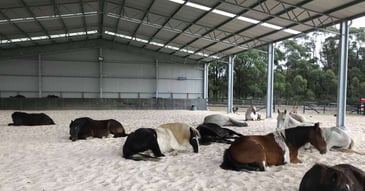
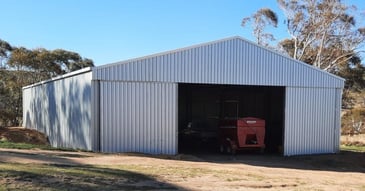

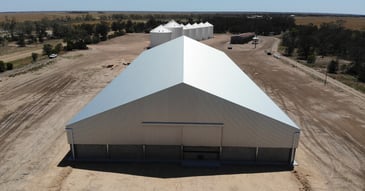
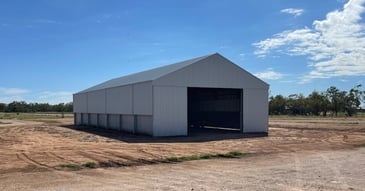
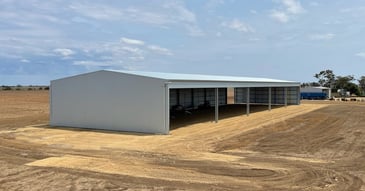
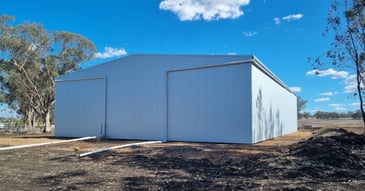
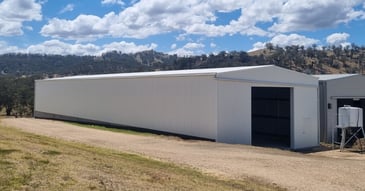
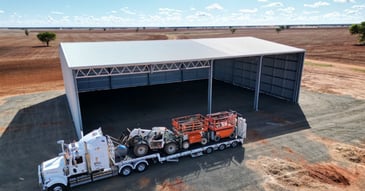
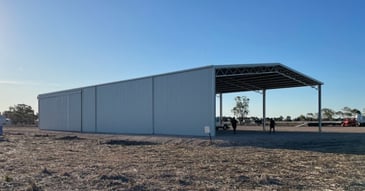
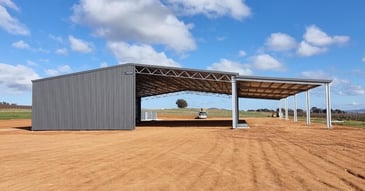
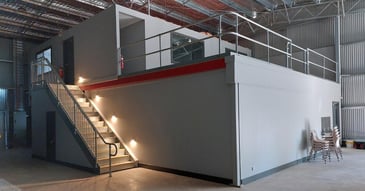
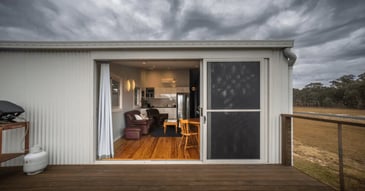
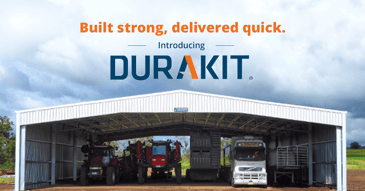
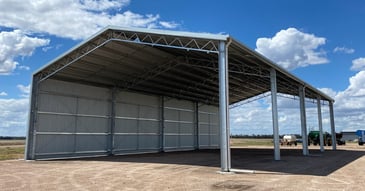
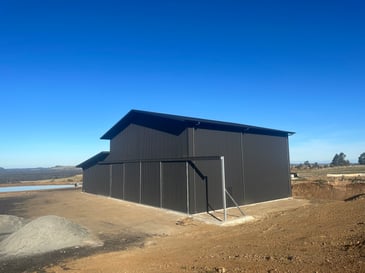
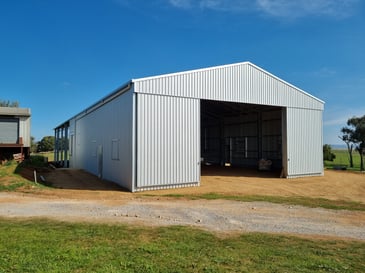
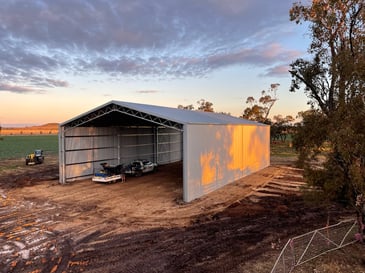
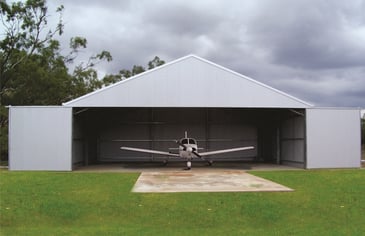
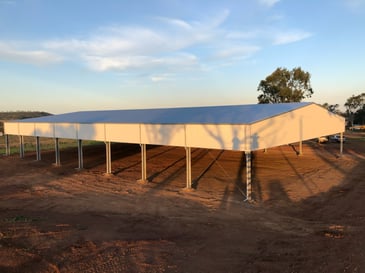
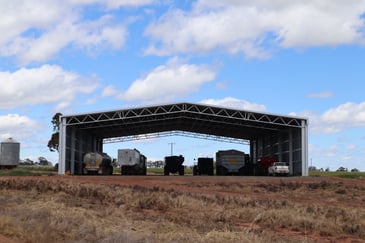
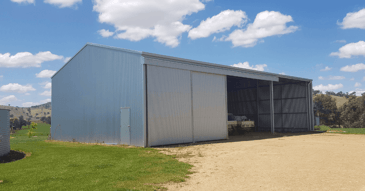
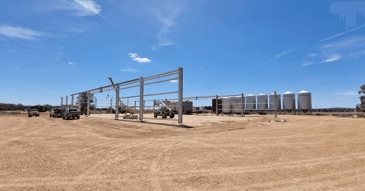
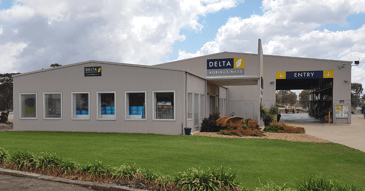
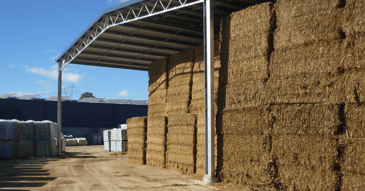
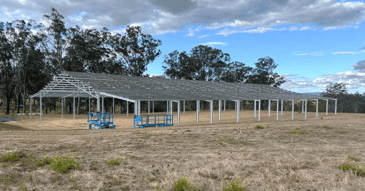
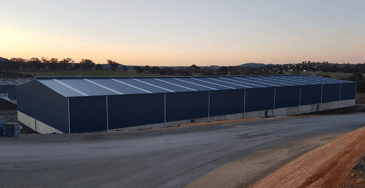
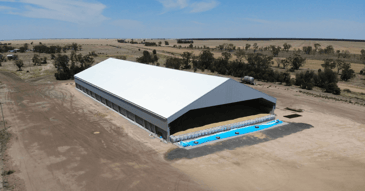
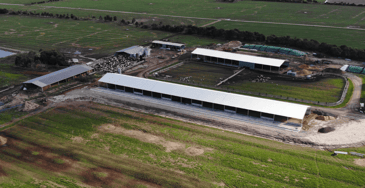
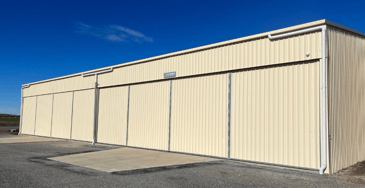
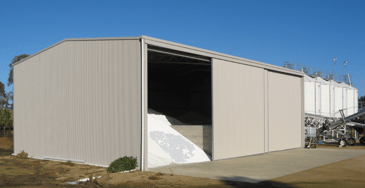
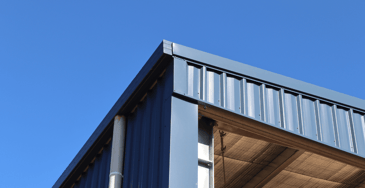
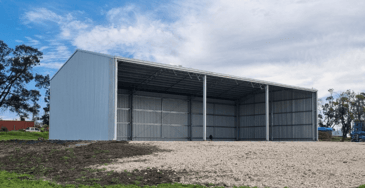

.png?width=365&name=abc_sheds_blog_building%20_a_steel_shed%20(1).png)
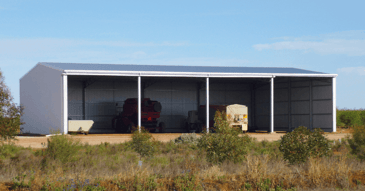

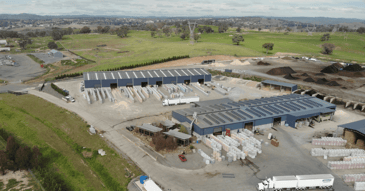
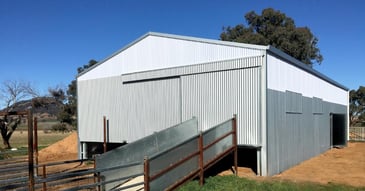
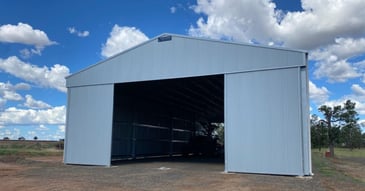
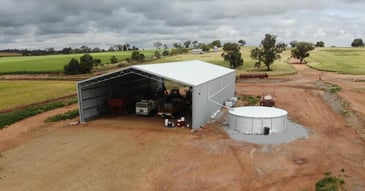
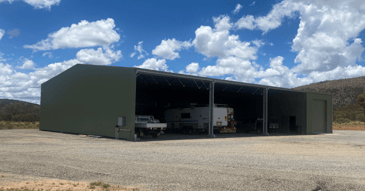
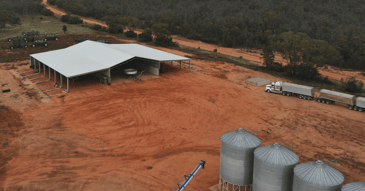
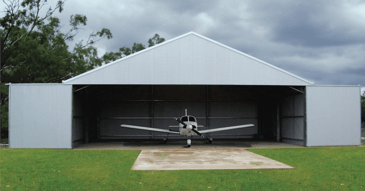
.png?width=365&name=abc_sheds_blog_feature_workshop_sheds_v2%20(1).png)
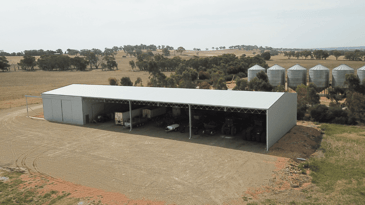
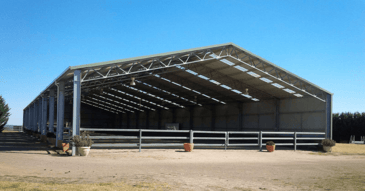
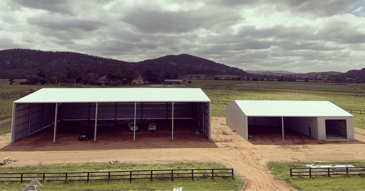
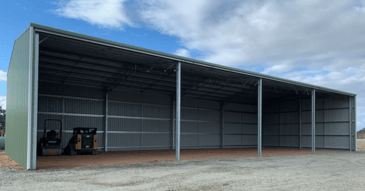
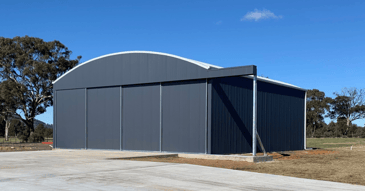
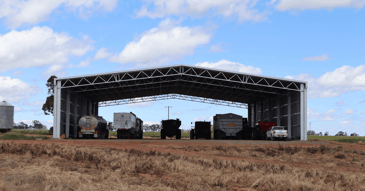

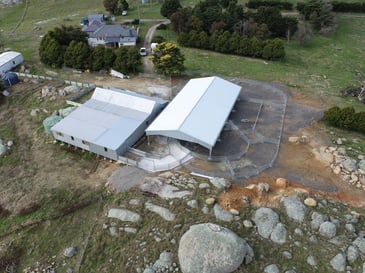
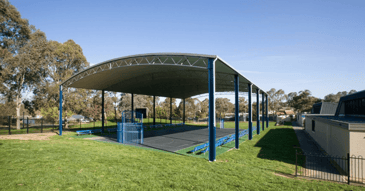
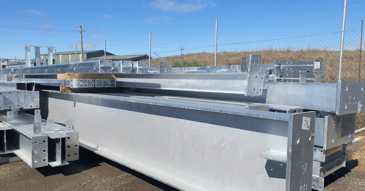
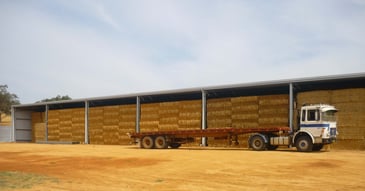
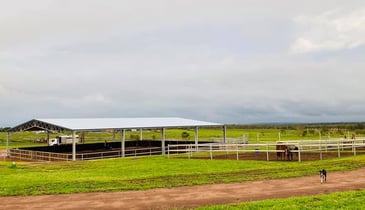
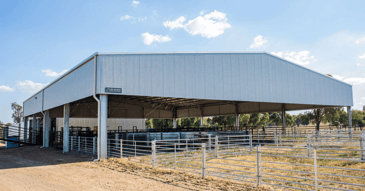
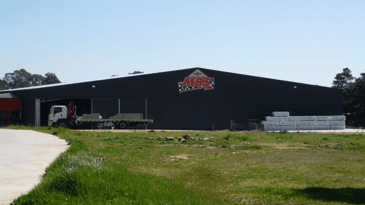
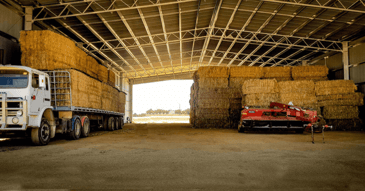
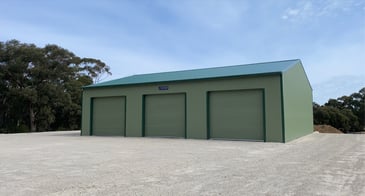

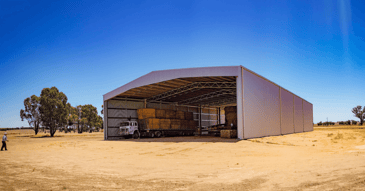

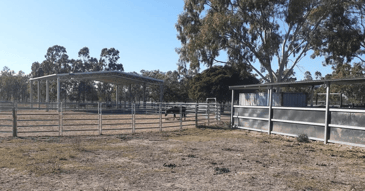
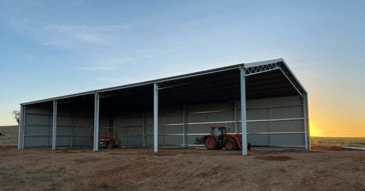
.png?width=365&name=abc_sheds_blog_feature_own_or_lease_aircraft_hangar%20(1).png)
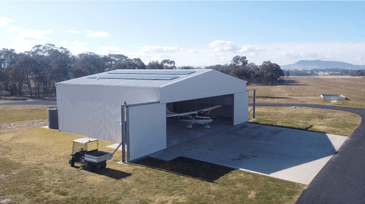
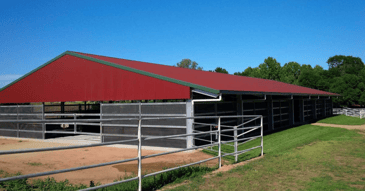
.png?width=365&name=abc_sheds_blog_feature_solar_energy%20(1).png)
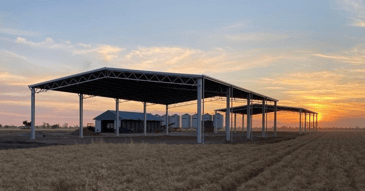
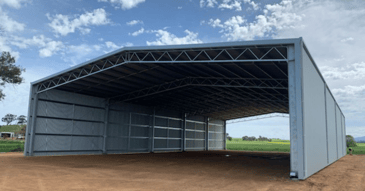
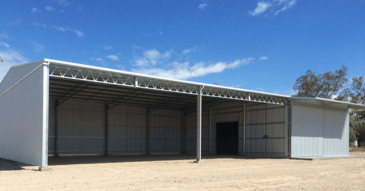
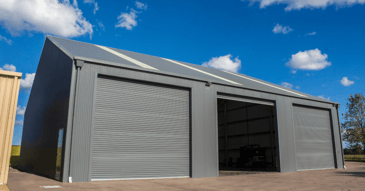
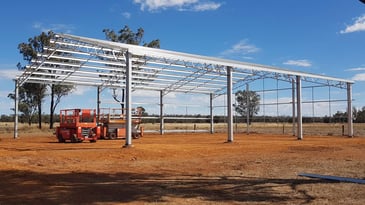
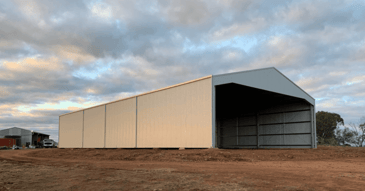
%20(1).webp?width=365&name=abc_sheds_blogs_building_a_hay_shed%20(1)%20(1).webp)
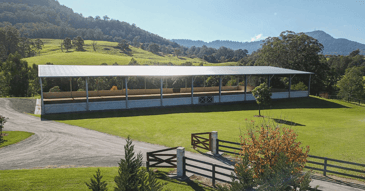
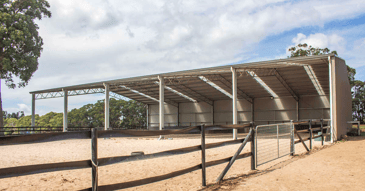
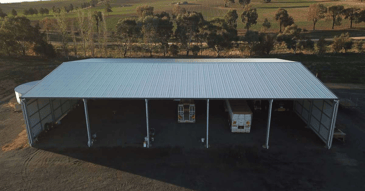

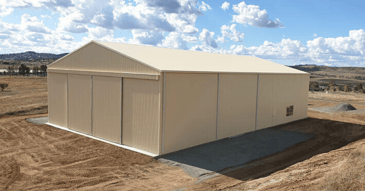
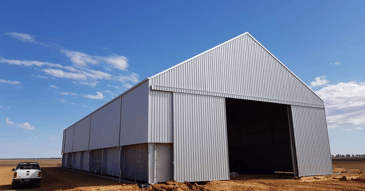
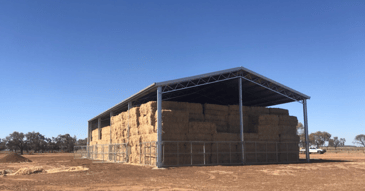
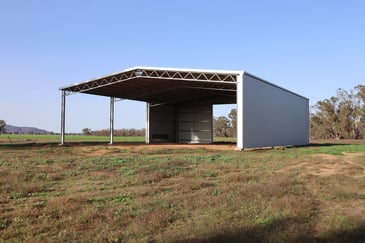
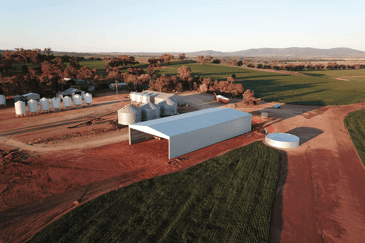
.jpg?width=365&name=abc_sheds_horses_in_paddock_with_shed%20(1).jpg)
